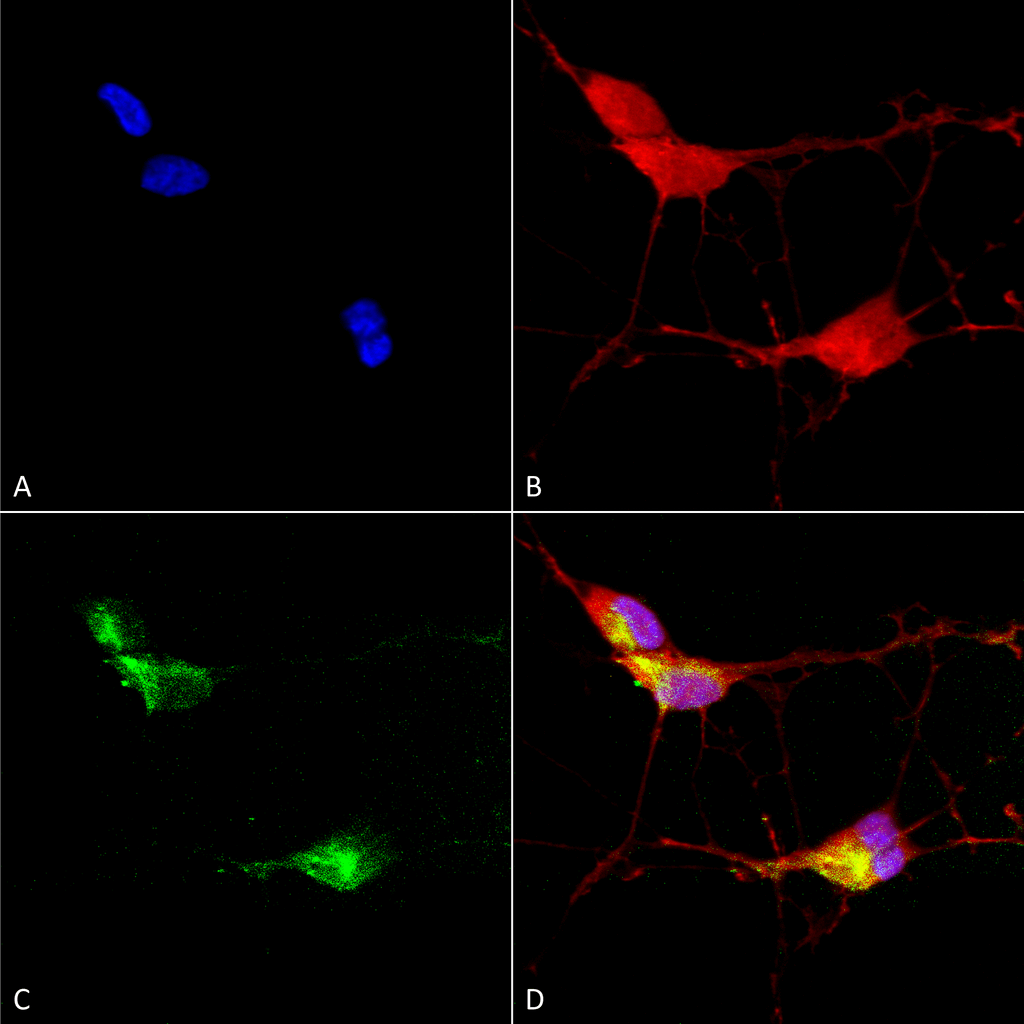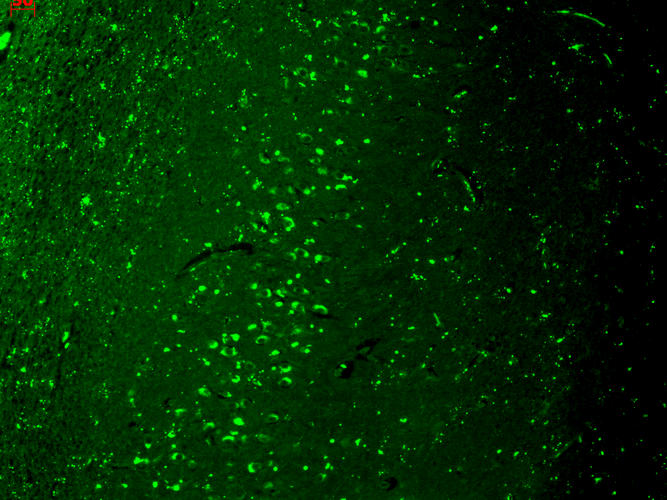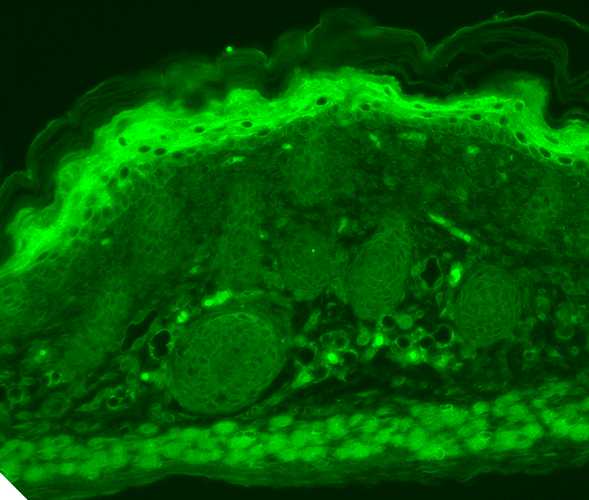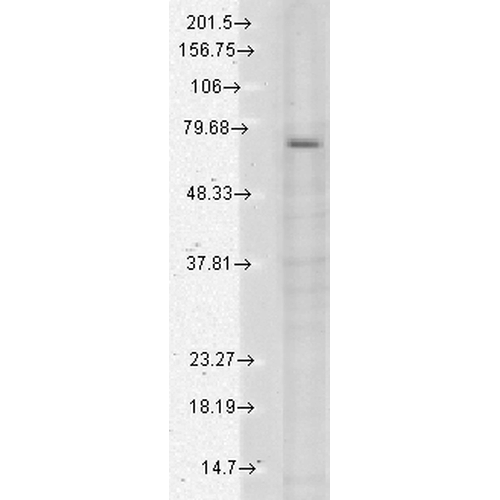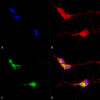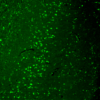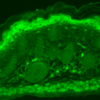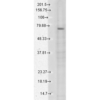Anti-TrpV3 Cation Channel Antibody (11520)
$466.00
| Host | Quantity | Applications | Species Reactivity | Data Sheet | |
|---|---|---|---|---|---|
| Mouse | 100ug | WB,IHC,ICC/IF,IP,AM | Human, Mouse, Rat |  |
SKU: 11520
Categories: Antibody Products, Ion Channel Antibodies, Products
Overview
Product Name Anti-TrpV3 Cation Channel Antibody (11520)
Description Anti-TrpV3 Cation Channel Mouse Monoclonal Antibody
Target TrpV3 Cation Channel
Species Reactivity Human, Mouse, Rat
Applications WB,IHC,ICC/IF,IP,AM
Host Mouse
Clonality Monoclonal
Clone ID S15-4
Isotype IgG2a
Immunogen Synthetic peptide corresponding to aa 458-474 (cytoplasmic C-terminus) of rat TrpV3 (accession no. NP_001020928).
Properties
Form Liquid
Concentration Lot Specific
Formulation PBS, pH 7.4; 50% glycerol, 0.09% sodium azide.
Buffer Formulation Phosphate Buffered Saline
Buffer pH pH 7.4
Buffer Anti-Microbial 0.09% Sodium Azide
Buffer Cryopreservative 50% Glycerol
Format Purified
Purification Purified by Protein G affinity chromatography
Specificity Information
Specificity This antibody recognizes human, mouse, and rat TrpV3.
Target Name Heat sensitive channel TRPV3
Target ID TrpV3 Cation Channel
Uniprot ID Q4QYD9
Accession Number NP_001020928
Research Areas Ion Channels
Background Ion channels are integral membrane proteins that help establish and control the small voltage gradient across the plasma membrane of living cells by allowing the flow of ions down their electrochemical gradient. The TrpV3 protein belongs to a family of nonselective cation channels that function in a variety of processes including temperature sensation and vasoregulation. The thermosensitive members of this family are expressed in subsets of sensory neurons that terminate in the skin and are activated at distinct physiological temperatures. The TrpV3 channel is activated at temperatures between 22 and 40 C. The TrpV3 gene is in close proximity to the TrpV1 gene on chromosome 17, and studies suggest that the corresponding two proteins associate with each other to form heteromeric channels.
Application Images





Description Immunocytochemistry/Immunofluorescence analysis using Mouse Anti-TrpV3 Monoclonal Antibody, Clone N15/4 (11520). Tissue: Neuroblastoma cells (SH-SY5Y). Species: Human. Fixation: 4% PFA for 15 min. Primary Antibody: Mouse Anti-TrpV3 Monoclonal Antibody (11520) at 1:100 for overnight at 4°C with slow rocking. Secondary Antibody: AlexaFluor 488 at 1:1000 for 1 hour at RT. Counterstain: Phalloidin-iFluor 647 (red) F-Actin stain; Hoechst (blue) nuclear stain at 1:800, 1.6mM for 20 min at RT. (A) Hoechst (blue) nuclear stain. (B) Phalloidin-iFluor 647 (red) F-Actin stain. (C) TrpV3 Antibody (D) Composite.

Description Immunohistochemistry analysis using Mouse Anti-TrpV3 Monoclonal Antibody, Clone N15/4 (11520). Tissue: hippocampus. Species: Human. Fixation: Bouin's Fixative and paraffin-embedded. Primary Antibody: Mouse Anti-TrpV3 Monoclonal Antibody (11520) at 1:1000 for 1 hour at RT. Secondary Antibody: FITC Goat Anti-Mouse (green) at 1:50 for 1 hour at RT.

Description Immunohistochemistry analysis using Mouse Anti-TrpV3 Monoclonal Antibody, Clone N15/4 (11520). Tissue: backskin. Species: Mouse. Fixation: Bouin's Fixative and paraffin-embedded. Primary Antibody: Mouse Anti-TrpV3 Monoclonal Antibody (11520) at 1:100 for 1 hour at RT. Secondary Antibody: FITC Goat Anti-Mouse (green) at 1:50 for 1 hour at RT.

Description Western Blot analysis of Human Cell lysates showing detection of TrpV3 protein using Mouse Anti-TrpV3 Monoclonal Antibody, Clone N15/4 (11520). Load: 15 µg. Block: 1.5% BSA for 30 minutes at RT. Primary Antibody: Mouse Anti-TrpV3 Monoclonal Antibody (11520) at 1:1000 for 2 hours at RT. Secondary Antibody: Sheep Anti-Mouse IgG: HRP for 1 hour at RT.
Handling
Storage This antibody is stable for at least one (1) year at -20°C.
Dilution Instructions Dilute in PBS or medium which is identical to that used in the assay system.
Application Instructions Immunoblotting: use at 1-10ug/mL. A band of ~70kDa is detected.Immunohistochemistry and
Immunocytochemistry: use at 0.1-1ug/mL
Immunofluorescence: use at 1-10ug/mL
These are recommended concentrations. User should determine optimal concentrations for their application.
Positive control: COS cell lysate transiently transfected with TrpM7.
Immunocytochemistry: use at 0.1-1ug/mL
Immunofluorescence: use at 1-10ug/mL
These are recommended concentrations. User should determine optimal concentrations for their application.
Positive control: COS cell lysate transiently transfected with TrpM7.
References & Data Sheet
Data Sheet  Download PDF Data Sheet
Download PDF Data Sheet
 Download PDF Data Sheet
Download PDF Data Sheet

